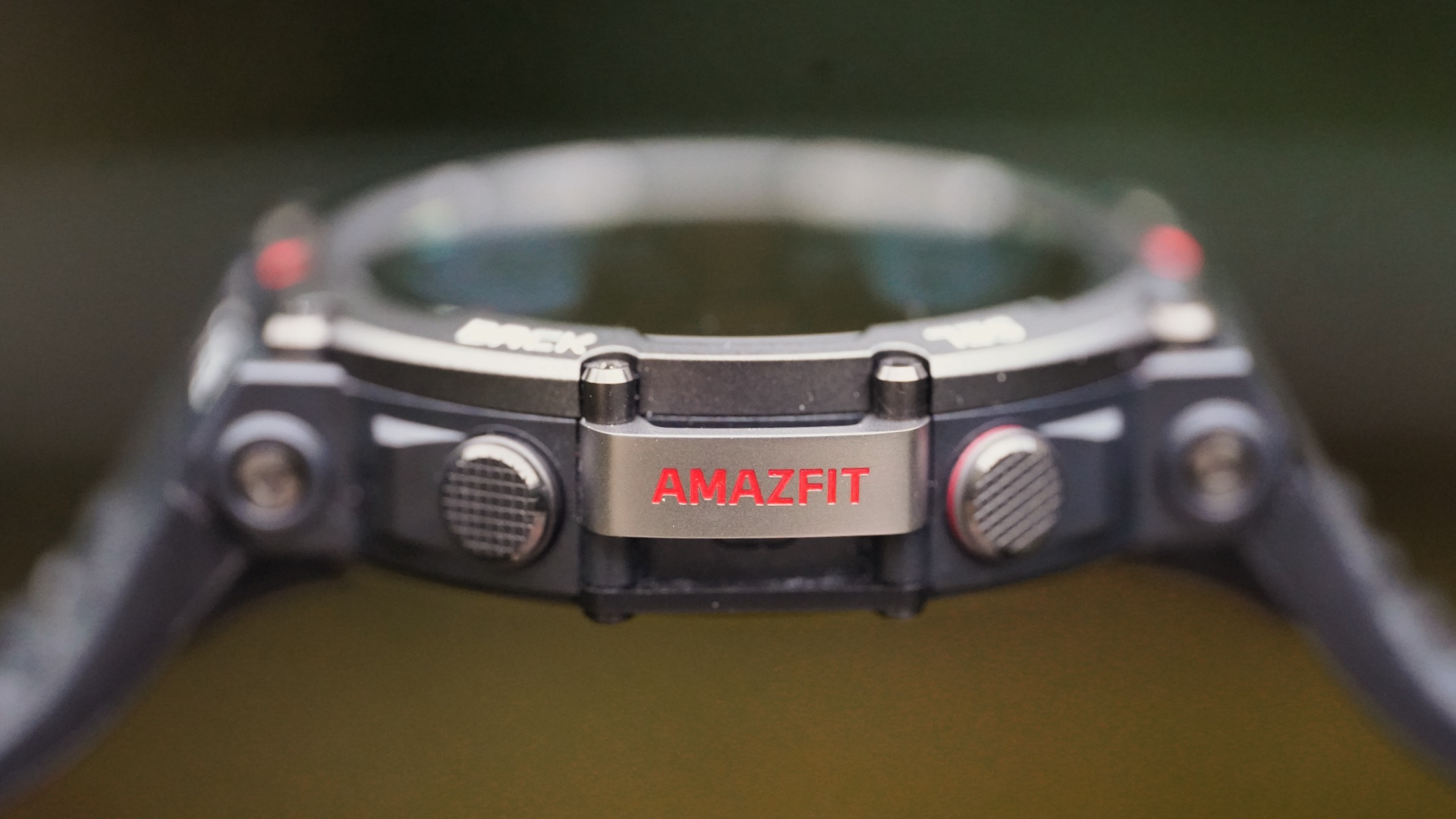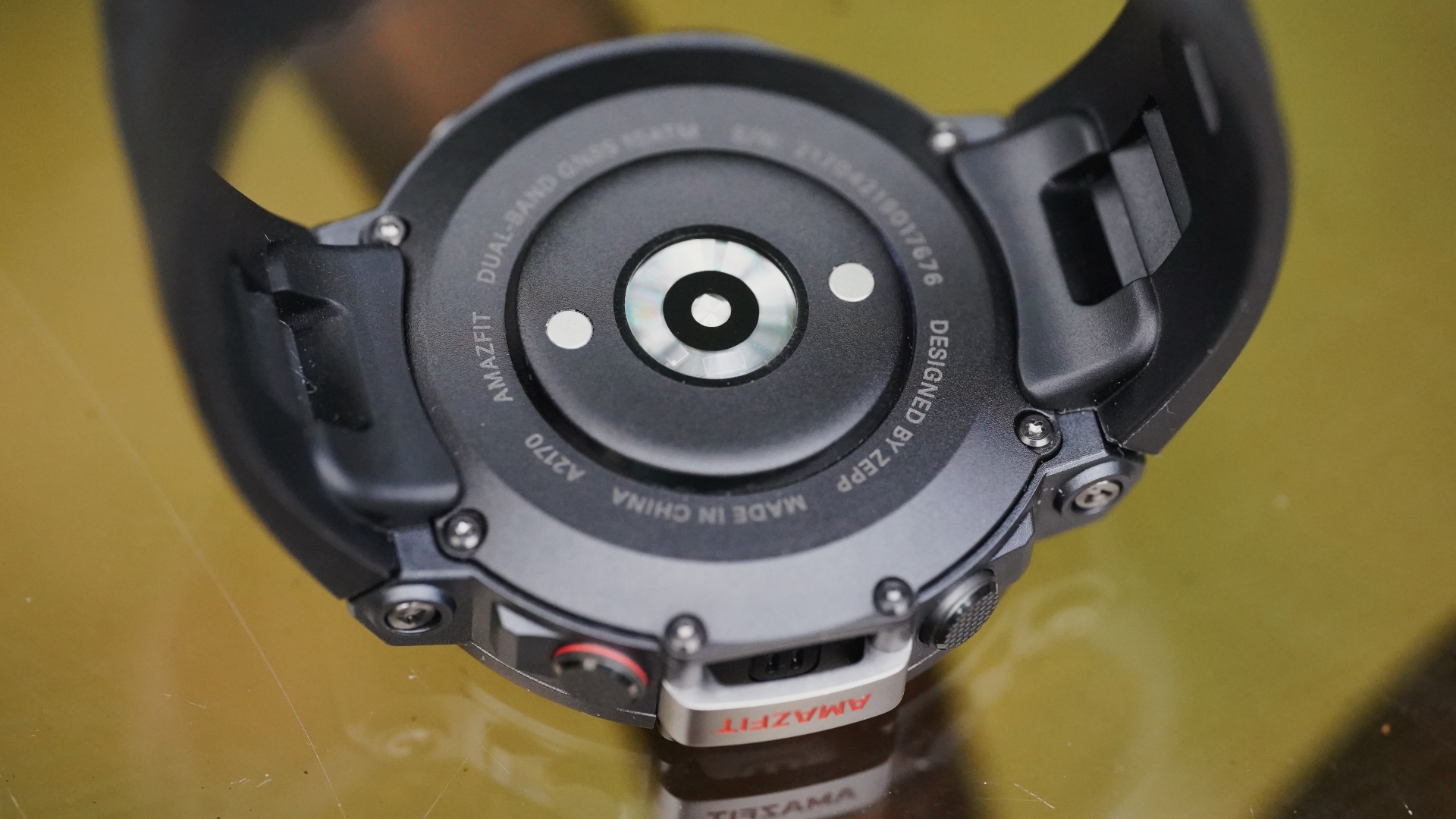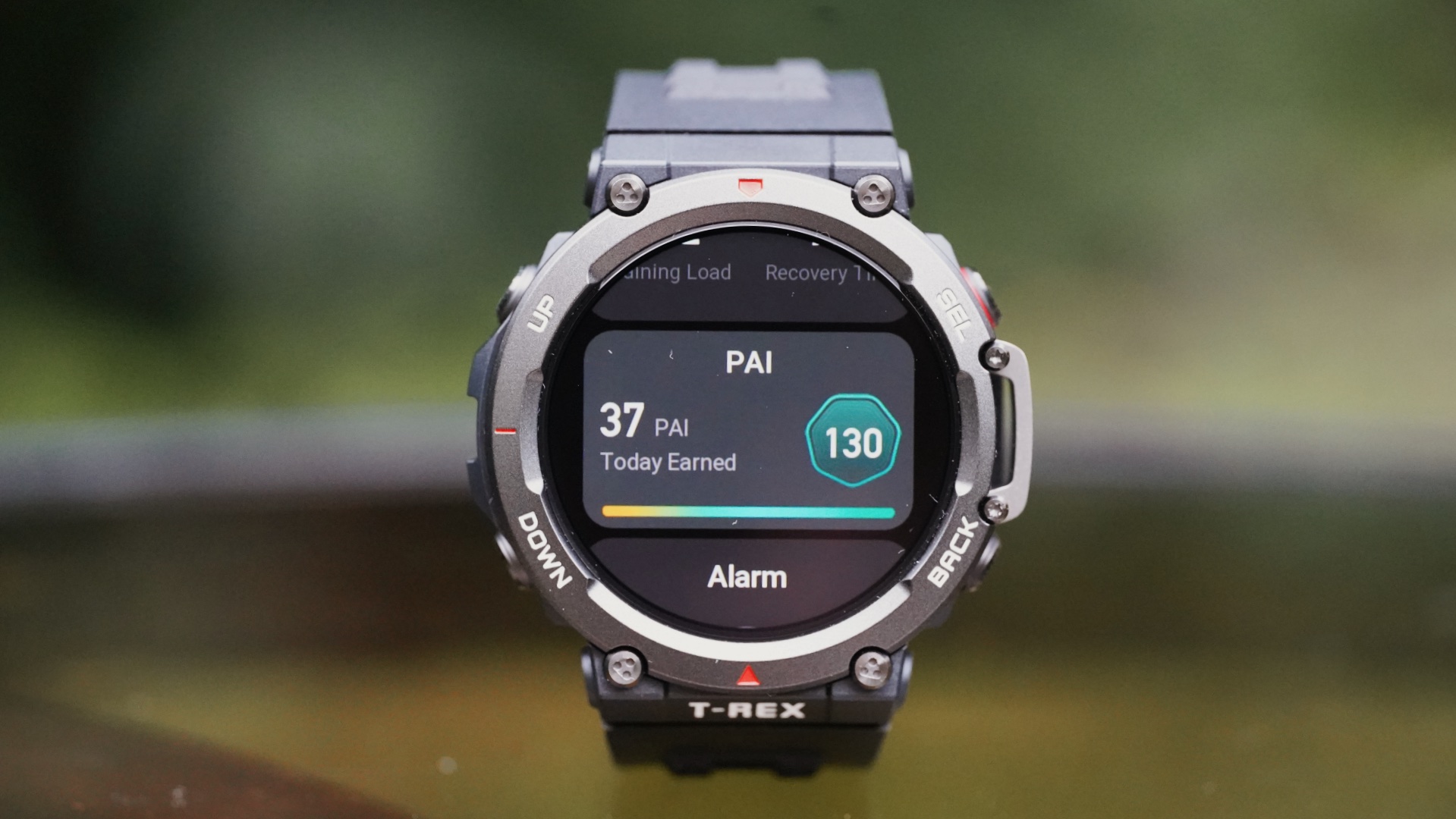Is the Amazfit T-Rex 2 the cheap Garmin Fenix alternative we've been waiting for?
The Amazfit T-Rex 2 offers a lot of functionality for an incredibly low price, but is it enough to topple the Garmin Fenix?


The Amazfit T-Rex 2 is a significant improvement over the T-Rex Pro: it has a larger display, longer battery life and better GPS chip. Sensor accuracy could be better, and the watch feels bulky for its sake, but if you're on a tight budget, the T-Rex 2 is still worth considering as your next outdoor watch.
-
+
GPS accuracy is excellent
-
+
Long battery life
-
+
Pretty AMOLED display
-
+
Plenty of new and improved features
-
-
Feels like it's bulky for the sake of it
-
-
Heart rate accuracy is so-so
-
-
Zepp app has its issues
-
-
Solar charging would be nice
Why you can trust T3

The Amazfit T-Rex 2 isn't a bad outdoor watch at all. It's the continuation of the Amazfit T-Rex Pro, a decent mid-range rugged outdoor watch aimed at people who want to own a Garmin Fenix 7X (or a Garmin Epix Gen 2) but can't quite afford to pay the premium. And for them, the T-Rex 2 is an excellent choice.
It's not the perfect smartwatch: some of the sensors are inaccurate, and the Zepp app could also be more user-friendly. The physical design is fine – the T-Rex 2 is rugged for sure – albeit a bit plasticky. The watch does have a lot of exciting features that I'm sure many outdoor enthusiasts will appreciate.
Come to think of it, the only reason why I'm so judgemental about the T-Rex 2 is because I'm measuring its performance and design against the most feature-rich Garmin watch ever to exist – maybe the Garmin Solar Instinct (or Instinct 2) would be a better comparison. Either way, the Amazfit T-Rex 2 has a lot to prove, even if it sells for such an incredibly low price point.
Amazfit T-Rex 2 review: Price and availability
The Amazfit T-Rex 2 was announced on 1 June and is available to buy from 30 June 2022 directly from Amazfit or at third-party retailers such as John Lewis, Amazon and Argos for recommended retail price of $230/£219.
AU price and availability TBC.
At launch, the T-Rex 2 will be available in three colourways: Astro Black & Gold, Ember Black and Wild Green.
In comparison, the Amazfit T-Rex Pro (links to Amazon) can be yours for around half the price of the T-Rex 2.
Get all the latest news, reviews, deals and buying guides on gorgeous tech, home and active products from the T3 experts
The Garmin Instinct 2 (retailer link) can be bought for a little under $350/£300.
Amazfit T-Rex 2 review: What's new?
Credit is where credit's due, the Amazfit T-Rex 2 is a much better smartwatch from a specifications point of view than the T-Rex Pro.
The T-Rex 2 has a larger AMOLED display with better resolution (1.3" v 1.39", 360x360 v 454x454 pixels), a larger battery (390 mAh v 500 mAh) and a better GPS chip. The T-Rex 2 also features the new BioTrackerTM 3.0 PPG biometric sensor that supports blood-oxygen measurements and stress tracking.
The watch got somewhat heavier (59.4g v 66.5g, both with straps) but even the new, heavier T-Rex 2 is much lighter than the Fenix 7X (89 grams). This is most likely due to the all-plastic – sorry, polycarbonate – watch case that helps keep the weight down without compromising on ruggedness.

Amazfit T-Rex 2 review: Physical design
Like the T-Rex Pro, the Amazfit T-Rex 2 adheres to the MIL-STD 810 standard, meaning it can withstand 85-degree Celsius heat or -30-degree Celsius cold, high humidity and shock. The watch is water-rated to 10 ATMs – tough enough for most people.
That said, it does feel like the designers at Amazfit added parts to the T-Rex 2 just to make it look more rugged, not because these parts have any function or anything.
For example, on the side of the watch case, you'll find the insert with the word AMAZFIT emblazoned on it. From what I can tell, this protruding bit doesn't serve a purpose apart from 'looking rugged', but I could be wrong.
Most screws around the bezel also look emphasised to improve the feel of ruggedness. I wonder if achieving the MIL-STD 810 certification would be possible without making the watch case ginormous. Now that would make me excited!
The T-Rex 2 has a feature the Fenix 7X doesn't: the AMOLED display, and it's not a terrible looking one either. The 1.39" touchscreen has a 454 x 454 pixels/326 PPI resolution and is bright and contrasty for most purposes.
The Amazfit website says the lens is a 'glass material' – so not sapphire or Gorilla Glass. I can assume it's tough enough, as the watch passed the MIL-STD 810 test but maybe not massively scratch-proof.
The T-Rex 2 can also be operated with the four buttons around the edge of the case. The silicone straps feel similar to the Fenix 7X but are non-hinged, just like on the Instinct.

Amazfit T-Rex 2 review: Battery life
Battery life is where the Amazfit T-Rex 2 shines; yet another reason why the 'including an AMOLED display will reduce battery life' argument is BS. The watch charges from 0-100% in two hours and can last up to 24 days in smartwatch mode. Needless to say, if you turn the always-on screen option on, this will be reduced significantly.
Enabling battery saver mode, the battery life goes up to 45 days while using a watch heavily will reduce it to 10 days – that's still a week and a half! GPS battery life is 26 hours in full dual-band multi-GNSS mode, 50 hours (!) in balanced mode, and 58 hours in Power Saving GPS battery mode. Those are solid numbers, especially for a watch with a 1.39" AMOLED display.
In my experience, I had to charge the T-Rex 2 once during the two-week testing period, and I wore it 24/7. Impressive.

Amazfit T-Rex 2 review: Features
The T-Rex 2 isn't a bad lifestyle watch either. It has the new BioTrackerTM 3.0 PPG biometric sensor that supports 24-hour health management functions. This includes heart rate monitoring, blood oxygen saturation measurements and stress level estimations.
The watch has 150+ sports modes, of which you'll use two, obviously, but it's an impressive number nevertheless. The workout capabilities of the T-Rex 2 have been boosted in general. For example, the watch can now estimate Vo2 max, training load, recovery time and more via its PeakBeats "self-developed workout status algorithm", turning the wearable into a bit of a multisport watch.
Obviously, I can't help but notice the similarities between Amazfit's PeakBeats and Garmin's Firstbeat Analytics algorithm approach –not like it's terrible. FirstBeat Analytics' algorithm is renowned for its reasonable estimations, so if Amazfit wants to copy that, I'd be happy to see the results.
Not a new feature but the T-Rex 2 also has the PAI system, which is Amazfit's version of Fitbit's Active Zone Minutes. PAI has been criticised for being convoluted, but I think it does the job just fine. The PAI system is backed by the ExerSense feature that automatically recognises eight types of workouts – similar to Fitbit's Auto Exercise Recognition feature.
The Amazfit T-Rex 2 also has more robust mapping features. You can import route files from the Zepp App and track your movement against there on the watch. The T-Rex 2 has a return to starting point navigation option that'll show you the fastest way back regardless of how you got to the point where you ended up being.

Amazfit T-Rex 2 review: GPS accuracy
I found the GPS accuracy of the T-Rex 2 okay. Distance measurements seemed on par with whichever Forerunner/Fenix I wore at the time, and the route tracking was also satisfactory. The route wasn't always super accurate; in some cases, it was off by – I'd say – 5 metres (approx. 16 feet). This didn't seem to significantly affect distance measurements, though, which is nice.
GPS picks up the signal relatively fast, and during testing, I haven't had any issues with the watch dropping GPS in any of the locations I ran.
A quick note on the Zepp app: I was slightly confused about where to find my exercise records. I first thought there were under the Health tab, but as it turns out, that's where you can initiate workouts, not where you find them collated. Workout history can be found on the dashboard by scrolling down a bit (under PAI).
The Zepp app has many of these quirks, but it's not unusable. It's actually much better than it used to be, but it could sure use some TLC and maybe more robust user testing.

Amazfit T-Rex 2 review: Heart rate sensor accuracy
Heart rate accuracy is a bit hit-and-miss on the Amazfit T-Rex 2.
On my first run with the watch, I wore the Amazfit T-Rex 2 on my dominant wrist, and the readings were terrible. The watch said my heart rate didn't go over 105 bpm for the whole run, which definitely wasn't the case as I was also using the Garmin HRM-Pro to benchmark my ticker.
For the next run, I switched wrists, which seemed to improve heart rate reading accuracy. Strangely enough, I couldn't find an option to tell the watch which wrist I was wearing it on, so I'm not sure if it was the problem in the first case.
Even on my non-dominant wrist, readings sometimes went off the chart – and running should be the easiest workout to track for a watch as it's a steady, medium-effort exercise without many spikes in heart rate.
The issue with heart rate tracking not being accurate is that it has a massive impact on other features, including VO2 max estimations, calories burned etc. And the even bigger issue with heart rate not being on point during workouts is that you're explicitly telling the watch to look out for changes in heart rate – imagine how it might perform when it needs to guess what you're doing.
I hope further software updates will doctor this issue; I'll keep my eyes peeled for improvements.

Amazfit T-Rex 2 review: Verdict
Is the Amazfit T-Rex 2 the cheap Garmin Fenix alternative we've been waiting for? Yes and no.
The watch offers a lot of functionality for a considerably low price point which will appeal to many outdoor enthusiasts who can't or don't want to spend tons of money on a top-tier Garmin Fenix.
Amazfit also added plenty of new features compared to the T-Rex Pro, another positive in our books. You've got a larger display, better GPS, larger battery and more smart features – plenty of bang for your buck.
Things get a bit less rosy when you start measuring the accuracy of some of these new features. GPS is fine, broadly speaking, but the new heart rate sensor needs refinement. That said, if you aren't planning on using the Amazfit T-Rex 2 for running or cycling training, you'll be okay.
If you're after a reasonably-priced rugged wearable with tons of smart and outdoor features, a bright AMOLED display, and good GPS, you'll be happy with the Amazfit T-Rex 2.
Amazfit T-Rex 2 review: Also consider
If you need a watch for a similar price for running or cycling training, check out the Polar Pacer Pro. The Pacer Pro is a decent multisport watch with plenty of training and recovery features, although it hasn't got an AMOLED screen, and the battery life is not nearly as good as the T-Rex 2's.
For a less rugged outdoor option, the Suunto 9 Peak might be worth considering. It's a high-end fitness watch that looks more stylish and weighs less than the competition. That had better sound appealing, though, because rivals offer more reliable stats, broader features and slicker software.

Matt Kollat is a journalist and content creator who works for T3.com and its magazine counterpart as an Active Editor. His areas of expertise include wearables, drones, fitness equipment, nutrition and outdoor gear. He joined T3 in 2019. His byline appears in several publications, including Techradar and Fit&Well, and more. Matt also collaborated with other content creators (e.g. Garage Gym Reviews) and judged many awards, such as the European Specialist Sports Nutrition Alliance's ESSNawards. When he isn't working out, running or cycling, you'll find him roaming the countryside and trying out new podcasting and content creation equipment.